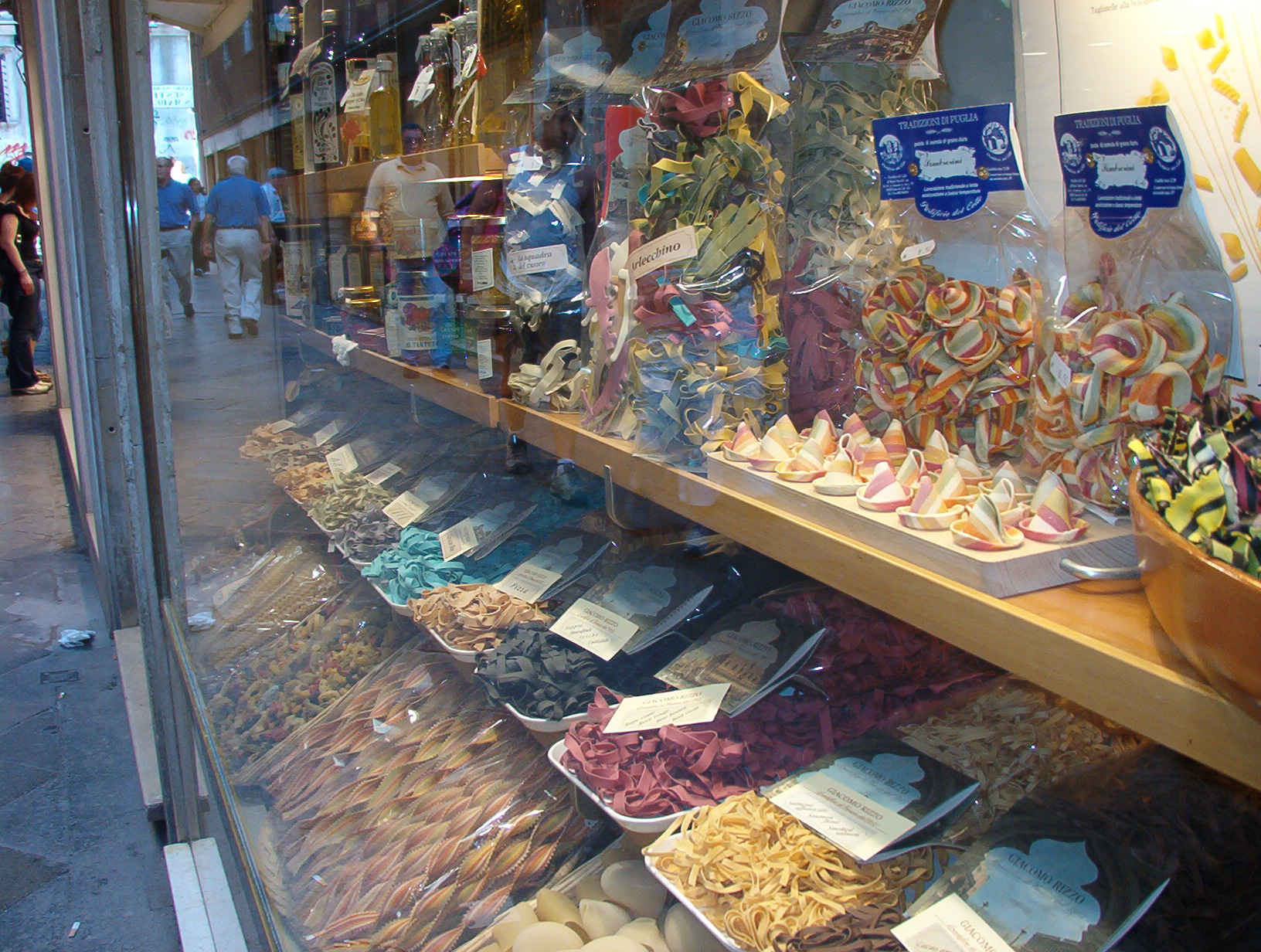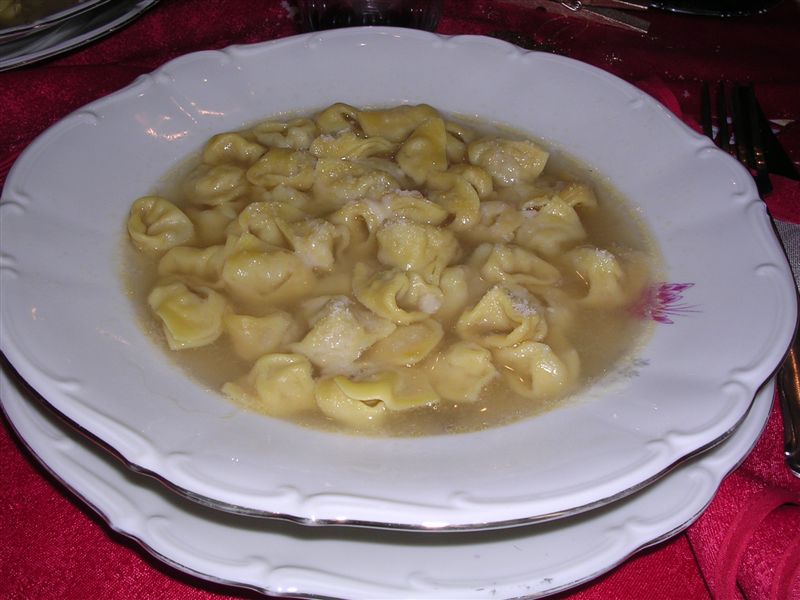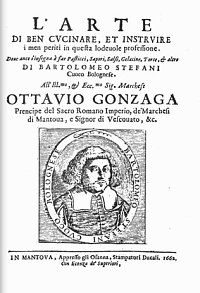|
Cappelletti (pasta)
''Cappelletti'' are ring-shaped Italian pasta so called for the characteristic shape that resembles a hat (''cappello'' in Italian). Compared to ''tortellini'', they have a different shape, larger size, thicker dough and different filling. The origins of the recipe, very widespread on a territorial basis, are ancient, traditionally and historically linked to Emilia-Romagna and Marche.Cristina Ortolani, ''L'Italia della pasta'', Touring Editore, 2003, p. 86, ISBN 9788836529339. From these areas it then spread over the centuries, becoming a typical dish in various cities. Some recent sources specifically indicate the area in the Cesena-Ferrara-Reggio Emilia triangle as the place of origin, others report the Marche as a land where ''cappelletti'' are of ancient tradition. Production areas Emilia A first reference to this culinary preparation could perhaps be found linked to Ferrara, in a text dating back to 1556 by Cristoforo di Messisbugo, former cook of the Este court with Alfon ... [...More Info...] [...Related Items...] OR: [Wikipedia] [Google] [Baidu] |
Italy
Italy ( it, Italia ), officially the Italian Republic, ) or the Republic of Italy, is a country in Southern Europe. It is located in the middle of the Mediterranean Sea, and its territory largely coincides with the homonymous geographical region. Italy is also considered part of Western Europe, and shares land borders with France, Switzerland, Austria, Slovenia and the enclaved microstates of Vatican City and San Marino. It has a territorial exclave in Switzerland, Campione. Italy covers an area of , with a population of over 60 million. It is the third-most populous member state of the European Union, the sixth-most populous country in Europe, and the tenth-largest country in the continent by land area. Italy's capital and largest city is Rome. Italy was the native place of many civilizations such as the Italic peoples and the Etruscans, while due to its central geographic location in Southern Europe and the Mediterranean, the country has also historically been home ... [...More Info...] [...Related Items...] OR: [Wikipedia] [Google] [Baidu] |
Ricotta
Ricotta ( in Italian) is an Italian whey cheese made from sheep, cow, goat, or Italian water buffalo milk whey left over from the production of other cheeses. Like other whey cheeses, it is made by coagulating the proteins that remain after the casein has been used to make cheese, notably albumin and globulin. Ricotta (literally meaning "recooked", "refined") protein can be harvested if the whey is first allowed to become more acidic by additional fermentation (by letting it sit for 12–24 hours at room temperature). Then the acidified whey is heated to near boiling. The combination of low pH and high temperature denatures the protein and causes it to flocculate, forming a fine curd. Once cooled, it is separated by passing the liquid through a fine cloth, leaving the curd behind. Ricotta curds are creamy white in appearance, and slightly sweet in taste. The fat content changes depending on the milk used. In this form, it is somewhat similar in texture to some fresh che ... [...More Info...] [...Related Items...] OR: [Wikipedia] [Google] [Baidu] |
Cuisine Of Emilia-Romagna
A cuisine is a style of cooking characterized by distinctive ingredients, techniques and dishes, and usually associated with a specific culture or geographic region. Regional food preparation techniques, customs, and ingredients combine to enable dishes unique to a region. A cuisine is partly determined by ingredients that are available locally or through trade. Regional ingredients are developed and commonly contribute to a regional or national cuisine, such as Japanese rice in Japanese cuisine or New Mexico chile in New Mexican cuisine. Likewise, national dishes have variations, such as gyros in Greek cuisine and hamburger in American cuisine. Religious food laws can also exercise an influence on cuisine, such as Hinduism in Indian cuisine, Sikhism in Punjabi cuisine, Buddhism in East Asian cuisine, Christianity in European cuisine, Islam in Middle Eastern cuisine, and Judaism in Jewish and Israeli cuisine. Etymology Cuisine is borrowed from the French meaning cook ... [...More Info...] [...Related Items...] OR: [Wikipedia] [Google] [Baidu] |
Dumplings
Dumpling is a broad class of dishes that consist of pieces of dough (made from a variety of starch sources), oftentimes wrapped around a filling. The dough can be based on bread, flour, buckwheat or potatoes, and may be filled with meat, fish, tofu, cheese, vegetables, fruits or sweets. Dumplings may be prepared using a variety of methods, including baking, boiling, frying, simmering or steaming and are found in many world cuisines. In the United States in May 2015 National Day Calendar listed National Dumpling Day as held on September 26, annually. African Banku and kenkey are defined as dumplings in that they are starchy balls of dough that are steamed. They are formed from fermented cornmeal. Banku is boiled and requires continuous kneading, while kenkey is partly boiled then finished by steaming in corn or banana leaves. Tihlo—prepared from roasted barley flour—originated in the Tigray region of Ethiopia and is now very popular in Amhara as well and spread ... [...More Info...] [...Related Items...] OR: [Wikipedia] [Google] [Baidu] |
Types Of Pasta
Type may refer to: Science and technology Computing * Typing, producing text via a keyboard, typewriter, etc. * Data type, collection of values used for computations. * File type * TYPE (DOS command), a command to display contents of a file. * Type (Unix), a command in POSIX shells that gives information about commands. * Type safety, the extent to which a programming language discourages or prevents type errors. * Type system, defines a programming language's response to data types. Mathematics * Type (model theory) * Type theory, basis for the study of type systems * Arity or type, the number of operands a function takes * Type, any proposition or set in the intuitionistic type theory * Type, of an entire function ** Exponential type Biology * Type (biology), which fixes a scientific name to a taxon * Dog type, categorization by use or function of domestic dogs Lettering * Type is a design concept for lettering used in typography which helped bring about modern textual printin ... [...More Info...] [...Related Items...] OR: [Wikipedia] [Google] [Baidu] |
List Of Pasta
There are many different varieties of pasta. They are usually sorted by size, being long (''pasta lunga''), short (''pasta corta''), stuffed (''ripiena''), cooked in broth (''pastina''), stretched (''strascinati'') or in dumpling-like form (''gnocchi/gnocchetti''). Yet, due to the variety of shapes and regional variants, "one man's ''gnocchetto'' can be another's ''strascinato''". Some pasta varieties are uniquely regional and not widely known; many types have different names based on region or language. For example, the cut rotelle is also called ''ruote'' in Italy and ''wagon wheels'' in the United States. Manufacturers and cooks often invent new shapes of pasta, or may rename pre-existing shapes for marketing reasons. Italian pasta names often end with the masculine plural diminutive suffixes ''-ini'', ''-elli'', ''-illi'', ''-etti'' or the feminine plurals ''-ine'', ''-elle'' etc., all conveying the sense of "little"; or with the augmentative suffixes ''-oni'', ''-one'', mea ... [...More Info...] [...Related Items...] OR: [Wikipedia] [Google] [Baidu] |
Tortellini
''Tortellini'' are pasta originally from the Italian region of Emilia (in particular Bologna and Modena). Traditionally they are stuffed with a mix of meat (pork loin, raw prosciutto, mortadella), Parmigiano Reggiano cheese, egg and nutmeg and served in capon broth (''in brodo di cappone''). In the area of origin they are usually sold fresh or home-made. Industrially packaged, dried, refrigerated, or frozen tortellini appear in many locations around the world, especially where there are large Italian communities. Origins The origin of tortellini is disputed; both Bologna and Modena, cities in Italy's Emilia-Romagna region, claim to be its birthplace. OxfordDictionaries.com traces the etymology of ''tortellini'' to the diminutive form of ''tortello'', itself a diminutive of ''torta'' ("cake" or "pie" in Italian). The recipe for a dish called "torteletti" appears in 1570 from Bartolomeo Scappi. Vincenzo Tanara's writings in the mid-17th century may be responsible for the pasta's r ... [...More Info...] [...Related Items...] OR: [Wikipedia] [Google] [Baidu] |
Agnolini
Agnolini are a type of stuffed egg pasta originating from the province of Mantua (in the Mantuan dialect they are commonly called "agnulìn" or "agnulì") and are oftentimes eaten in soup or broth. The recipe for Agnolotti was first published in 1662 by Bartolomeo Stefani, a cook at the court of the Gonzaga family, in his book '' The art of cooking well''. Agnolini's recipe is passed down from generation to generation by Mantuan families. Agnolini are the main ingredient of soups of the Mantuan cuisine, usually consumed during holidays and important occasions. According to Mantuan tradition during Christmas Eve chicken broth with the Agnolini alongside other traditional Mantuan dishes such as the Agnolini's soup Sorbir d'agnoli, with abundant addition of parmesan cheese are consumed. Sorbir, to which red wine is added, generally Lambrusco, represents the opening to the Christmas lunch. Agnolini differ from the classic Emilian tortellini, to which they are similar, due ... [...More Info...] [...Related Items...] OR: [Wikipedia] [Google] [Baidu] |
Forlimpopoli
Forlimpopoli (; rgn, Frampùl) is a town and ''comune'' in the province of Forlì-Cesena, north-eastern Italy. It is located on the Via Emilia between Cesena and Forlì. History The name of Forlimpopoli derives from the Roman ''Forum Popilii'', most likely connected to the consul Publius Popilius Laenas, who founded it in 132 BC. The area has been inhabited since Palaeolithic times, as proved by recent archaeological discoveries. Later it was settled by the Umbri and the Gauls from the Pianura Padana. In the 1st century BC ''Forum Popili'' become a ''municipium'', and flourished due to its location near the important port of Classis (for which it provided amphorae for wine transport), as well as its own agricultural production. It started to decay in the 3rd century AD, and, as in the High Middle Ages the area became marshy, its agricultural output fell drastically. In this period it was part of the Byzantine Exarchate of Ravenna and had its first Catholic bishop in the 5th cen ... [...More Info...] [...Related Items...] OR: [Wikipedia] [Google] [Baidu] |
Pellegrino Artusi
Pellegrino Artusi (; Forlimpopoli, near Forlì, August 4, 1820 – Florence, March 30, 1911) was an Italian businessman and writer, best known as the author of the 1891 cookbook '' La scienza in cucina e l'arte di mangiar bene'' ("Science in the Kitchen and the Art of Eating Well"). Biography The son of the wealthy merchant Agostino (nicknamed , or "little eel") and Teresa Giunchi, Pellegrino Marcello Artusi came from a large family: he had 12 siblings. He was named Pellegrino in honor of Saint Pellegrino Laziosi of Forlì. Like many wealthy children, he attended a seminary school in the nearby town of Bertinoro. Between the years 1835 and 1850, Artusi spent a great deal of time in student circles in Bologna (in one of his works he claims to have been enrolled at the University). In the bar ''Tre Re'' he met the patriot Felice Orsini, from Meldola another town near Forlì. When he returned to his hometown, he took over his father's business, making quite a bit of money, bu ... [...More Info...] [...Related Items...] OR: [Wikipedia] [Google] [Baidu] |
Michele Placucci
Michele (), is an Italian male given name, akin to the English male name Michael. Michele (pronounced ), is also an English female given name that is derived from the French Michèle. It is a variant spelling of the more common (and identically pronounced) name Michelle. It can also be a surname. Both are ultimately derived from the Latin biblical archangel Michael, original Hebrew name מיכאל, meaning " Who is like God?". Men with the given name Michele *Michele (singer) (born 1944), Italian pop singer * Michele Abruzzo (1904–1996), Italian actor *Michele Alboreto (1956–2001), Italian Grand Prix racing driver *Michele Amari (1806–1889), Italian politician and historian *Michele Andreolo (1912–1981), Italian footballer *Michele Bianchi (1883–1930), Italian journalist and revolutionary *Michele Bravi (born 1994), Italian singer *Michele Cachia (1760–1839), Maltese architect and military engineer * Michele Canini (born 1985), Italian footballer * Michele Dell'Orc ... [...More Info...] [...Related Items...] OR: [Wikipedia] [Google] [Baidu] |





